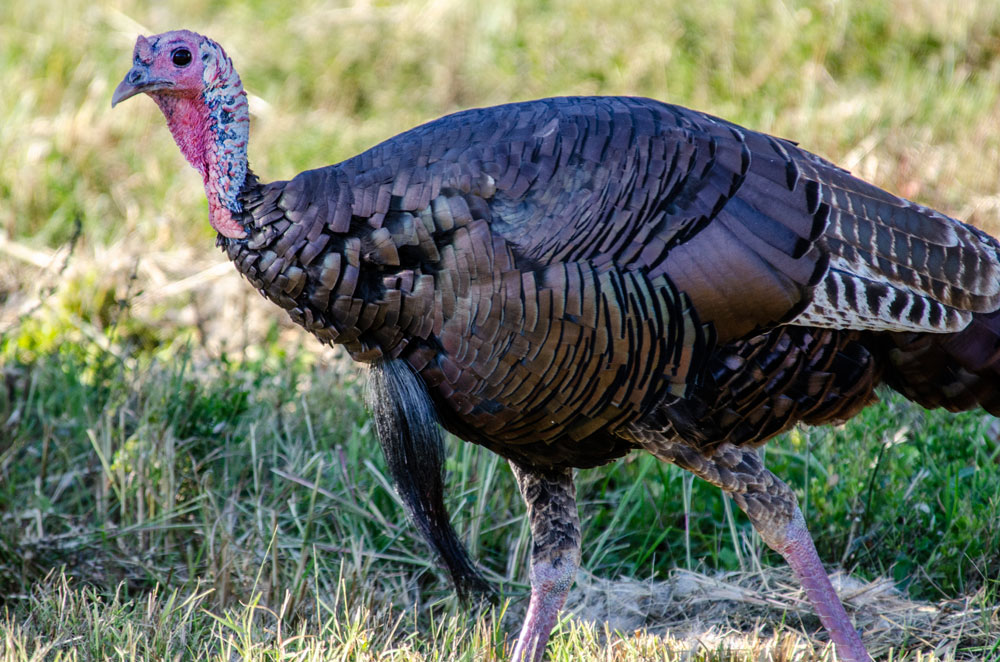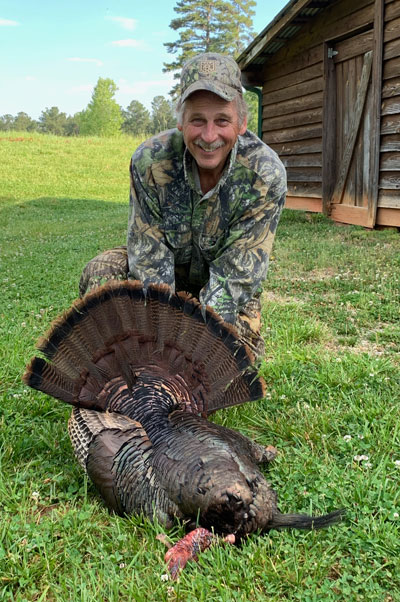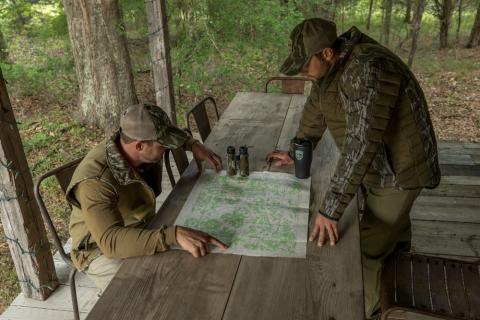provided by John Phillips
Mossy Oak Fishing Team Member Hank Parker is known by many as a tournament bass fisherman because that’s where he built his name and reputation in the early days of the Bassmaster tournament trail. Hank is a true outdoorsman and loves hunting just as much as he loves fishing. He’s an avid turkey hunter. Hank hunts turkeys in North Carolina and South Carolina.

When a Turkey Gets Flushed
If the turkey we’re hunting gets flushed, we’ll stay right where we are and not call at all. The old saying, “patience kills more turkeys than fancy calling does,” definitely applies to this situation. In my experience, if we sit still for at least two hours after the turkey has been flushed by another hunter, we’ll still have the opportunity to take that gobbler. I realize that many turkey hunters can’t wait two hours because they either have to return to their jobs or perhaps they have family responsibilities that won’t allow them to hunt later in the morning. But, when I go turkey hunting, I plan to hunt all day. That gives me the benefit of being able to wait two hours before I leave the spot from where I’ve been calling. Oftentimes, two hours after a turkey has been spooked, his hens may return to their nests or just leave him. That gobbler will remember where he’s heard that hen calling to him before the hunter’s spooked him. There’s a very good chance that he’ll return to that same spot. However, if he doesn’t, I’ll get up and move to another place where I know there’s a turkey.
 During the early season, if I’m walking during daylight hours, I like to get down in a creek bottom with tall banks. Then I can move through the woods without being seen by a turkey on the ground. The entire time I’m waiting for the turkey to return, I won’t do any calling. Instead, I want that turkey to notify me where he is. One of the advantages that I have is using hearing aids. With those hearing aids, I can hear any sound a turkey may make when he’s coming back. I can hear him walking, drumming and gobbling, especially with the hearing aids cranked up. The brand of hearing aids I like to use is Tetra out of Nashville, Tennessee. They’re a little pricey, but if you hunt a lot, you’ll understand what makes them different from other types of devices and why they make you a better hunter. Before I hadn’t been able to hear a turkey drum for many years. Then when I got these hearing aids, I could hear a turkey drum 100 yards away.
During the early season, if I’m walking during daylight hours, I like to get down in a creek bottom with tall banks. Then I can move through the woods without being seen by a turkey on the ground. The entire time I’m waiting for the turkey to return, I won’t do any calling. Instead, I want that turkey to notify me where he is. One of the advantages that I have is using hearing aids. With those hearing aids, I can hear any sound a turkey may make when he’s coming back. I can hear him walking, drumming and gobbling, especially with the hearing aids cranked up. The brand of hearing aids I like to use is Tetra out of Nashville, Tennessee. They’re a little pricey, but if you hunt a lot, you’ll understand what makes them different from other types of devices and why they make you a better hunter. Before I hadn’t been able to hear a turkey drum for many years. Then when I got these hearing aids, I could hear a turkey drum 100 yards away.
Boots for the Hunt
I like knee-high waterproof snake boots. I’ve had snakes strike at me a few times while hunting turkeys, so I wear snake-proof boots the entire turkey hunting season. This way, I don’t have to worry about snakes, and I can walk in shallow creeks without being seen or heard. As I’m prospecting for turkeys, I don’t call while I’m walking in a creek, but instead I’ll walk for about 200-250 yards, crawl up to the edge of the creek bank and then look and listen for turkeys. If I don’t see any, I’ll crawl out of the creek, sit next to a tree and start calling. I’ll sit for about 15 minutes and call about eight times. If a gobbler doesn’t answer me or come in, I’ll crawl back up to the edge of the creek, get down in the creek, walk another 200-250 yards and complete the same crawling-out-of-the creek tactic I’ve used before. But, if I’m hunting on a windy day, I may sit for 45 minutes before I get back in the creek and start moving.
Early Season Turkey Calls
I really like to use a slate call and a glass call - both pot-type friction calls. I also keep a mouth diaphragm in my mouth any time I’m in turkey woods, but I use it very sparingly from daylight until about 9 or 10 a.m. At that time, the wind usually will start blowing, and my mouth diaphragm can be heard better and further than my glass or slate call can. I’ll start off with really light, soft yelps on the glass call. If a turkey doesn’t answer me, I’ll start cutting with a mouth diaphragm. I’ll continue with the soft glass calls for a little while. When a turkey still doesn’t answer my calls, I’ll become more aggressive and start cutting with my mouth call to get a turkey to gobble.
I take most of my turkeys between 10 a.m. and 2 p.m. when most turkey hunters already have left the woods.



























